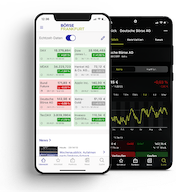Bonds: "Caution during the interest rate reduction cycle

In response to the US Federal Reserve's interest rate cut, US government bonds are under some pressure. Yields are rising, partly because Fed members are divided over the future path of interest rates. German corporate bonds remain in demand.
September 19, 2025. FRANKFURT (Frankfurt Stock Exchange). In its first interest rate move since the end of 2024, the US Federal Reserve lowered its key interest rate by 25 basis points on Wednesday. This came as no surprise. “The Fed delivered what its chairman, Jerome Powell, had already hinted at a month ago in Jackson Hole,” commented Elmar Völker of LBBW.
Higher yields after falling interest rates
As expected, the central bank cited the growing downside risks to US employment as the reason for its decision. According to the Fed's current forecast, “the unemployment rate could peak at 4.5 percent this year, while inflation will not reach the Fed's target of 2.0 percent until 2028,” explains Ulrich Stephan of Deutsche Bank.
There were no major price jumps on the bond markets in response to the interest rate cut. After briefly slipping below 4.00 percent, the yield on 10-year US government bonds recently rose again to 4.12 percent. So far, however, this is nothing more than a counter-movement to the previous decline in yields. At the beginning of the year, US Treasuries were still yielding 4.80 percent.
Inflation remains a cause for concern
Even the prospect of further interest rate cuts failed to spark any price speculation on the US government bond market. According to Völker, the dot plot suggests that two further easing measures of the same magnitude will follow by the end of 2025. However, the markets had already priced this in. “The central bankers have therefore merely cemented existing expectations.”
At the same time, the bond specialist points out that “opinions among central bankers on the appropriate interest rate path still vary widely.” Before the meeting, around half of Fed officials were in favor of fewer than the three interest rate cuts expected by consensus this year. “The prospect of a series of interest rate cuts could therefore easily falter if US inflation picks up noticeably in the coming months,” explains Völker.
Strong labor market data comes as a surprise
According to Burkhard Fehling of Commerzbank, the number of initial applications for US unemployment benefits published on Thursday (down by 33,000 to 231,000) has further dampened expectations of interest rate cuts. “The sharp rise last week therefore appears to have been an outlier.” According to the analyst, Fed Chairman Powell's emphasis at his press conference that the future path of the US economy is somewhat unclear currently “argues for a cautious approach to the interest rate cut cycle.”
Corporate bonds with yield premiums
Observers are currently reporting a significant bear steepening on the European bond market – a steeper yield curve. While the yield on 10-year German government bonds climbed from 2.69 percent to 2.73 percent over the week, two-year bonds remained virtually unchanged at around 2.02 percent.
Corporate bonds, which are currently in high demand, have a little more to offer. Tim Oechsner of Steubing AG has recorded good sales in two Porsche Automobil Holding securities, which mature in 2028 (XS2615940215) and 2030 (XS2643320109) and yield 2.8 and 3.1 percent, respectively. Gregor Daniel from Walter Ludwig Wertpapierhandelsbank sees strong buying interest in bonds from Mercedes-Benz (DE000A3LH6U5) and MTU (XS2887896574). Both securities offer yields of just over 3 percent until 2031. A bond from E.On even offers 4.2 percent, although it does not mature until 2044 (XS2791960664). Demand is also high here.
By Thomas Koch, 19 September 2025 © Deutsche Börse AG
About the author
Thomas Koch is a CEFA investment analyst, investment specialist for structured products, and certified certificate advisor. Since early 2006, he has been covering capital market events as a freelance journalist.
Feedback and questions to redaktion@deutsche-boerse.com

By Thomas Koch




